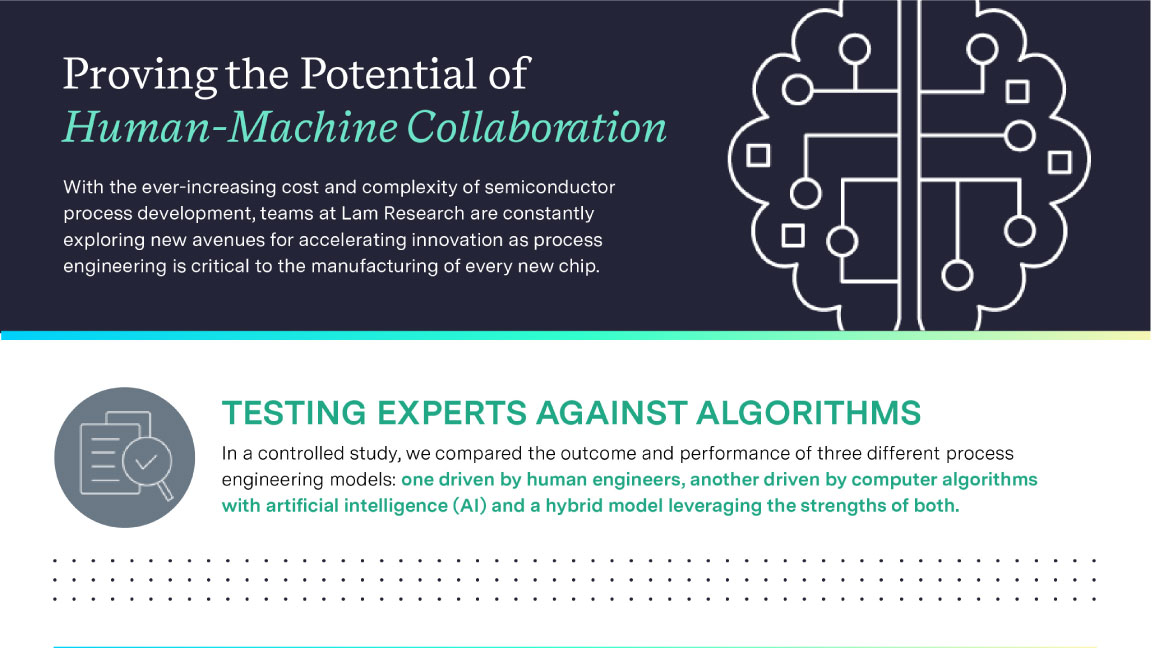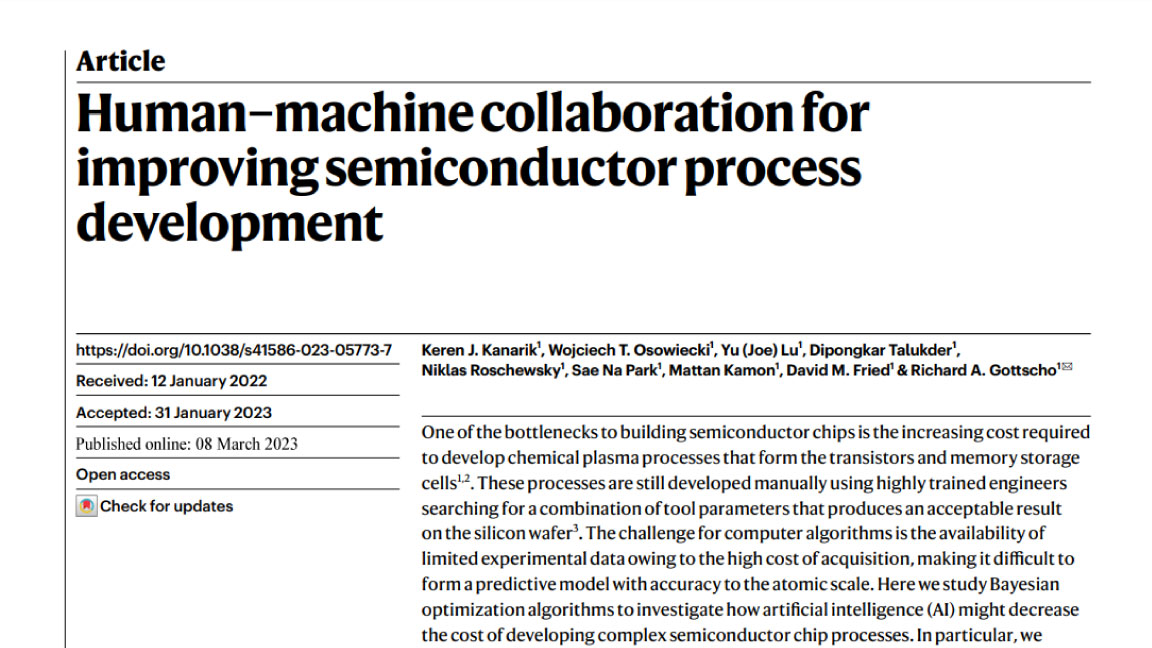 |
Download the Infographic (JPG)
Download the Infographic (PDF)
Proving the Potential of Human-Machine Collaboration
With the ever-increasing cost and complexity of semiconductor process development, teams at Lam Research are constantly exploring new avenues for accelerating innovation as process engineering is critical to the manufacturing of every new chip.
Testing Experts Against Algorithms
In a controlled study, we compared the outcome and performance of three different process engineering models: one driven by human engineers, another driven by computer algorithms with artificial intelligence (AI) and a hybrid model leveraging the strengths of both.
Cost to target
Algorithm – $739k cost-to-target
Experienced Human Engineer - $105k cost-to-target
HF-CL Approach - $52k cost-to-target
The results showed that the hybrid model was able to reduce chip development costs by 50%
Our hybrid model uses a Human First-Computer Last (HF-CL) approach where an expert engineer begins the process and a computer algorithm completes it.
Why HF-CL Works
Human engineers excel in the early stages of development because they have prior knowledge of process trends and dependencies.
Algorithms excel in the late stages of development because they are far more cost-efficient near the tight tolerances of the target.
By transferring the development process at the right time in an HF-CL approach, we’re able to capitalize on the strengths of both humans and algorithms.
SHAPING A FASTER, SMARTER FUTURE
The results of our research show great promise for the application of the HF-CL strategy in process development. By continuing to advance this field, we hope to make the jobs of process engineers easier while reducing costs and accelerating a critical link in the semiconductor ecosystem.
Visit lamresearch.com to learn more about the study and to see how else we’re proving that innovation can power the future of our industry – and our world.

